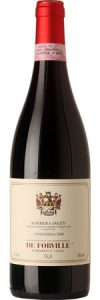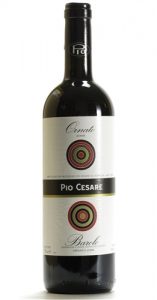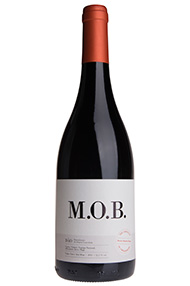We tasted: Domain Bunan Bandol, M&S, £11.32 (down from £17)
Tasting Notes
 Emma says: “This heatwave in the UK has brought with it many uncomfortable experiences. Oven like conditions on the Jubilee Line, muggy offices where everyone is fighting over a USB powered portable fan, and not to mention the restless nights without air con or breezes. We just aren’t hardwired for heat in this little island.
Emma says: “This heatwave in the UK has brought with it many uncomfortable experiences. Oven like conditions on the Jubilee Line, muggy offices where everyone is fighting over a USB powered portable fan, and not to mention the restless nights without air con or breezes. We just aren’t hardwired for heat in this little island.
I can now add to that list the need to taste Mourvèdre on a hot sweaty night. I arrived home off the heated pavements just swooning for a glass of something chilled and white. But no, I devised this dastardly 52 Grapes schedule so I really must drink this 14.5% alcohol beast of a red. So here goes.
Mourvèdre actually loves heat, as grapes go. Winemakers use it in a blend because it retains a good amount of acidity in heat. That is difficult in warm climates because as the grape accumulates sugar it loses acidity. On the first aroma this is definitely a ripe red, full of brooding dark fruits with a spicy and earthy edge, exactly what I expect from Mourvèdre. The fruit is plummy and sweet with a gentle perfume of fresh beetroot. To taste it is really a mouthful, the feeling is grippy but not astringent and it sits heavily on the palate with that warming alcohol really hitting at the back of the mouth. The fruit flavours are dense and there is this sort of earthy clay taste with gives it a distinct savoury expression. I also get that herbal undertone that is typical of Southern french wines a bit like dried herbs in a pasta sauce. I can really appreciate how complex this wine is, even if it wasn’t what I was feeling like drinking today. I almost feel a little sad that I’m not sitting by a camp fire chilling in a typically cool English summer evening. This would have been the ultimate wine for that occasion.
So in summary if you love heavy, full bodied reds and haven’t tried Mourvèdre, in particular a Bandol, then please do. This is a wine that may tick all your boxes. I might have to buy another bottle and keep it for when the winter sets in.”
Andy says: “You might have noticed that our notes and pages have been appearing later and later. That’s mostly due to my addiction to Softball and playing Mon/Tue/Wed for the last 10 weeks or so.
That has severely eaten into the time available to keep things up to date. It was the same again this week, as I arrived home at around 10pm (early, actually), hot, tired, sweaty, and needing to taste a Mourvèdre. The first thing I noticed as I poured it was the lovely deep purple ink colour of the wine. I gave it a sniff (it’s what you do) and said it smelt smokey. ‘Not really’, said Emma, who then sniffed it and said ‘actually, yeah it does’. Master of Wine nil, sweaty bloke one.
‘Earthy, smokey richness’ was my next phrase, which scored big points as apparently ‘earthy’ is the classic description, and one I see Emma used. I promise I hadn’t read her notes this time. There was also a touch of ‘farmyard’ to it. If you’ve ever walked through a muddy field of cows, or a barnyard, you’ll know the smell I mean. Not as strong and vomit inducing as the real life smell, obviously, just that hint of countryside. It’s known as brett, and at the right level can add an extra dimension to the wine, which it did here. The tannins were tight and grippy, but let go immediately.”
Buying Guide
Mourvèdre (aka Monastrell in Spain) is a grape variety most commonly used as a small part of a blend. We will be seeking out a Bandol from the South of France where this grape is used as the dominant grape in their styles. Any Monastrell from Spain would equally work well.


 Emma says: “I had originally scheduled the next two weeks to be South American wines to time with my annual trip to those countries. Sadly those trips were postponed at the last minute which means I’m now sitting in 30 degree summer heat trying to enjoy a ripe and rich Carmenere.
Emma says: “I had originally scheduled the next two weeks to be South American wines to time with my annual trip to those countries. Sadly those trips were postponed at the last minute which means I’m now sitting in 30 degree summer heat trying to enjoy a ripe and rich Carmenere.
 Emma says: “I made Nerello one of our 52 grapes just to test Andy’s supremo pun skills. I’m looking forward to seeing what he comes up with for our newsletter.
Emma says: “I made Nerello one of our 52 grapes just to test Andy’s supremo pun skills. I’m looking forward to seeing what he comes up with for our newsletter.
 Emma says: “I have been looking forward to this week, as to me Pinot is the finest of red grapes and at its best in Burgundy, France; much like Chardonnay. For many winemakers, making a great Pinot Noir is the ultimate challenge of their life. It is a grape that is very sensitive to climate and soil, as well as winemaking technique.
Emma says: “I have been looking forward to this week, as to me Pinot is the finest of red grapes and at its best in Burgundy, France; much like Chardonnay. For many winemakers, making a great Pinot Noir is the ultimate challenge of their life. It is a grape that is very sensitive to climate and soil, as well as winemaking technique.
 We tasted: Domaine de Lavail, Old Vines Carignan, M&S, £10
We tasted: Domaine de Lavail, Old Vines Carignan, M&S, £10
 Emma says: “Back to red this week and what a joyful return given we are tasting Barbera D’Asti. I often pick whites above reds as wines that perk me up after a long day, but Barbera is one of those reds that has all the attributes to revive me.
Emma says: “Back to red this week and what a joyful return given we are tasting Barbera D’Asti. I often pick whites above reds as wines that perk me up after a long day, but Barbera is one of those reds that has all the attributes to revive me.
 Emma says: “For us there are two Malbecs this week, which marks the first 52 Grapes dispute. I rushed off to buy a Malbec to taste before our island holiday this week, searching out one from its traditional region, Cahors in France; not an easy task.
Emma says: “For us there are two Malbecs this week, which marks the first 52 Grapes dispute. I rushed off to buy a Malbec to taste before our island holiday this week, searching out one from its traditional region, Cahors in France; not an easy task. volleyball. I’m hot, sweaty, and covered in sand.
volleyball. I’m hot, sweaty, and covered in sand.
 Emma says: “In honour of the King of Italian grapes “Nebbiolo” I decided to crack open a special bottle this week, Pio Cesare Barolo 2009. This is a renowned family producer that I knew would show this grape at its best. Nebbiolo can be a tricky beast because it has very bold tannins, so I was hoping that a great example would help Andy understand what I love about it.
Emma says: “In honour of the King of Italian grapes “Nebbiolo” I decided to crack open a special bottle this week, Pio Cesare Barolo 2009. This is a renowned family producer that I knew would show this grape at its best. Nebbiolo can be a tricky beast because it has very bold tannins, so I was hoping that a great example would help Andy understand what I love about it.
 Emma says: “This week has certainly been a mission. In fact I’ll be surprised if anyone joins in. After suggesting that people find a Douro red which has predominantly Touriga Nacional in the blend our search of London showed this was nigh on impossible.
Emma says: “This week has certainly been a mission. In fact I’ll be surprised if anyone joins in. After suggesting that people find a Douro red which has predominantly Touriga Nacional in the blend our search of London showed this was nigh on impossible.
